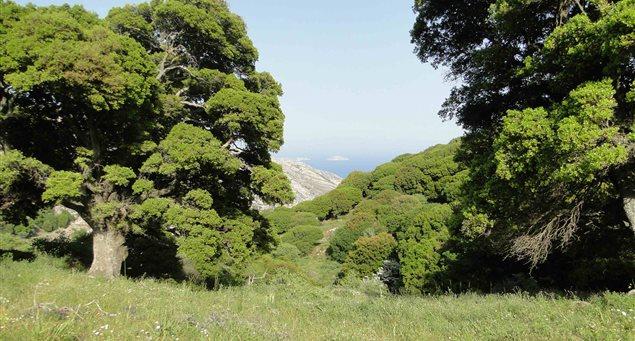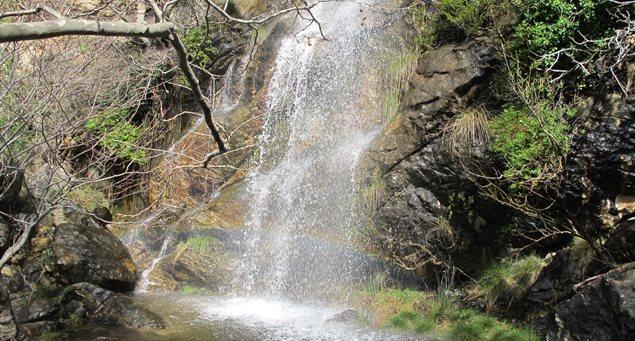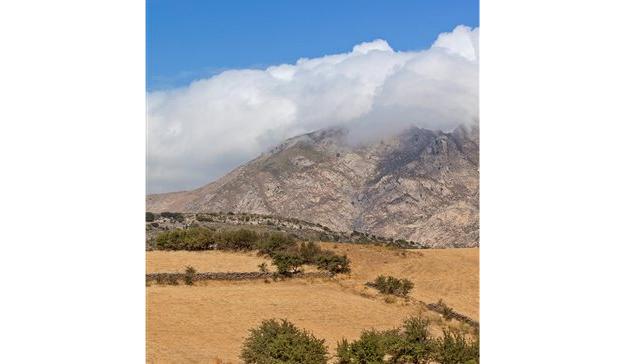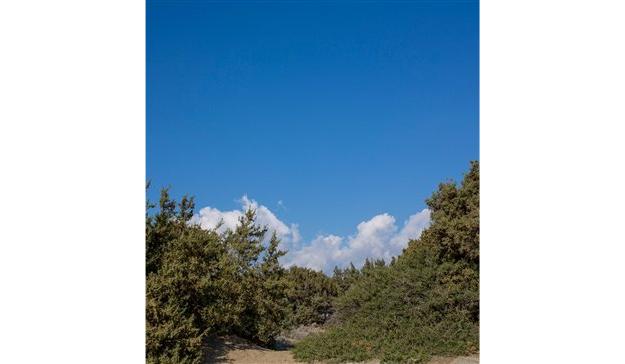
The Cyclades in general and Naxos in particular have a rich flora, with mainly European features but also with elements from Western Asia and North Africa.
Due to the large number of natural habitats and its significant water resources — at least by Cycladic standards — Naxos boasts a wide variety of species, with more than 963 recorded flowering plants (of which 51 are encountered only in the Aegean region) 12 only in the Cyclades and four are endemic of Naxos (Cerastium runemarkii, Buple urumaira, Erysimum naxense, Symphytum naxicola).
In contrast to island plant communities, many characteristic trees — particularly cultivated ones — are not indigenous but have been imported from other parts of the world, as far back as antiquity: the tame olive tree (southern Turkey), the carob tree (Middle East), the giant reed (SE Asia), the broad-leaved oak tree, the chestnut and Aleppo pine trees (mainland Greece), the mulberry tree (Far East), the eucalyptus(Australia), as well as opuntia – or prickly pear- and agave plants (Central America) etc.
Some of the most important and characteristic plant communities of Naxos are found on the dwarf bush steppe, which — if not overgrazed — displays an impressive number of species. The dwarf bush ecosystems occupy a large part of the island, especially areas that suffered from wildfires in the past and without a deep soil.
On flysch (slate) substrates, the dwarf bush is typically dominated by the broom (Genista acanthoclada) while on limestone substrates thyme (Coridothymus capitatus) predominates.
Perennial plants in dwarf bush ecosystems have certain common features: they are usually thorny or have fragrant foliage and frequently shed their leaves in summer – at least in part.
Many of the aromatic plants that are used in European cuisine, such as thyme, savory and oregano, are found growing wild in this ecosystem. Naxos used to be densely forested.
Remnants of the old forests and Mediterranean shrubs (maquis) can still be found in remote areas of the island, particularly where some water is present in the subsoil.
However, even in dry and calcareous soils, such as those that dominate the southeastern part of the island, Phoenician juniper (Juniperus phoenicea) scrub or open woodland can be found. The sandy region of Alyko harbors one of the biggest stands of Large-fruited juniper (Juniperus macrocarpa) in Greece.
Also in mountainous Naxos, there are small areas of regenerated Kermes oaks (Quercus coccifera) and Cretan maple (Acer sempervirens).
Lastly, below the peak of Mt. Zas, there survives a relict stand of large Holm oaks (Quercus ilex), a leftover from the island’s wooded past.
The best time of the year to become acquainted with the Naxian flora is the period between late March and mid- June when most plants flower.
Many interesting species can be easily observed along the various hiking trails of the island. In general, little-grazed areas in the mountains and in northern Naxos, but also in the Tragea region, offer the best opportunities to enjoy the local plants.
More specialized habitats such as wet meadows and cliff faces in gorges harbor further interesting flowers and rare chasmophytes. For example, over 20 species of orchids (in the genera Anacamptis, Neotinea, Cephalanthera, Ophrys, and Serapias) have been found on Naxos.




